Heirlooms, column shifters and lights - Mick's Workshop 460



|
Family jewels, more three-on-three fixes, light me up
MICK'S WORKSHOP
More eyes are better
We’ve had a bit to say about what to do to when you’re pulling your car out of the shed after a bit of a rest, but what if you’re in the market for a new transport of delight?
You might have saved a bit of money over lockdown – after all, we weren’t travelling anywhere – or maybe you’ve decided now is the time to get that car you lusted after across the years, but could not afford till now.
The best advice you can ever get is, when you go to look at a car (and I think you should always eyeball it) take a second set of eyes, attached to someone who knows what they’re looking at. Their role isn’t just to spot any potential issues, but to also act as the one person in the exchange who isn’t going to come over all emotional about the deal.

Tom's new jewel
You’re allowed to fall in lust with the shape and colour, and their role is to act as the voise of reason.
If the car is up for auction, do your research in advance. When it’s with a dealer or private seller, you have less of an issue with deadlines – except of course if it’s a model that’s in big demand.
In any case, don’t skimp on your research. If it’s interstate, buy an airfare – the cost will be insignificant compared to what a dud deal can end up costing.
And don’t be afraid to hire a pro to go along with you. Lots of mechanics I know will tag along for a modest fee and provide good advice. You just need to find a mutually suitable time.

Modern front end and steering neatly married to the HG Monaro
Meanwhile we’ve just overcome a big hurdle with Tom’s HG Monaro – the big custom build we’ve had going on for some time now. You may recall we had some issues getting the engine and front end sitting properly, particularly now we were using a much-updated suspension and steering set-up.
It’s the nature of one-off builds that you have to take things as they come. Which often means having a few runs at an issue before it’s completely solved. Anyway, we promised Tom the engine would look like a jewel when it was installed in the bay, and I reckon we’ve succeeded.
Here's my tip
Wiper time
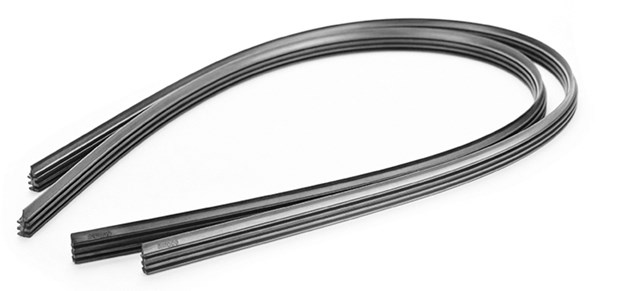
While we’re all out there recommissioning cars that have been dormant over Winter, or lockdown, or both, it’s easy overlook one of the most obvious components – windscreen wipers. A fresh set of blades will cost $10-30 and will save you scratching up your windscreen. Is there any noise more teeth-grinding than metal wiper arms scratching your screen?
LETTERS:
Expired HK
I was wondering if any of your readers have deliberately blown up a motor? In the late 70s I worked at a Water Buffalo Station in the NT, in what is now part of Kakadu National Park. They had on old HK Wagon that was literally on it’s last legs, which they wanted me to take back to Darwin to trade on a new XD Falcon.
"Don’t worry if it doesn’t make it," the manager told me, "We’ve already got the new XD, and the trade in price for this one. And the supply truck’s following you, so he can tow you if it dies." Well opportunities like that don’t come along often.
Having never experienced a blown motor before, 23 year old me decided to take killing that 186 as some kind of challenge.
Though just getting the beast going was the first challenge I had, as it was stuck in top, and I had to ride the clutch all the way out of the station’s yard, just to get it mobile. Keeping the revs high and the clutch smelling, as I negotiated the turn off the dirt station road and on to the East Arnhem Hwy, was the next challenge.
But from there on it was pedal to the metal all the way west to the Stuart Hwy. The temp gauge had been jammed in the red zone since leaving the dirt road, and the smells and noises coming from the engine bay were not good.
Disappointingly, the car just gradually expired, rather than going out with a bang. and it finally breathed its last about 50km east of Humpty Doo, and I waited for the truck with the satisfied smile from a job well done.
When we got to the Ford dealership in Darwin we were unhooking the very dead Holden, when a distressed Salesman came running out of the Showroom. "What the hell’s that?" He screamed "It’s your trade in from Point Stuart Station," I cheerfully replied. "See ya!"
Gary G Smith
IT’S PRETTY much the trademark of engines from that generation, they’re extremely hard to kill and will cope with all sorts of abuse. As you proved, you have to try hard to make one grind to a halt – they just seem to tolerate an horrendous amount of abuse. That’s very different to modern powerplants which, despite all the monitoring that’s packaged up with them, often don’t respond well to clumsy human intervention. They’re chalk and cheese.
Esky gasket
Mick, I have a 2.0lt Escort (MkII) that has blown a head gasket. We’ve yet to pull off the head to check the exact cause, but are there any general tips for putting it back together to help ensure it doesn’t happen again?
Bob Childs
GIVEN OUR earlier comments about older engines, the issue may well turn out to be human failure. In any case those SOHC engines can take a lot and there’s no great mystery to rebuilding them. I would get a machinist involved, making sure your bores and mating surfaces such as the head are all how they should be. You might take the opportunity to warm it up. Those fours respond well to a slight lift in compression, plus a more lively cam matched to the arropriate valve springs. They’re a great little engine.
Left-threaded 528
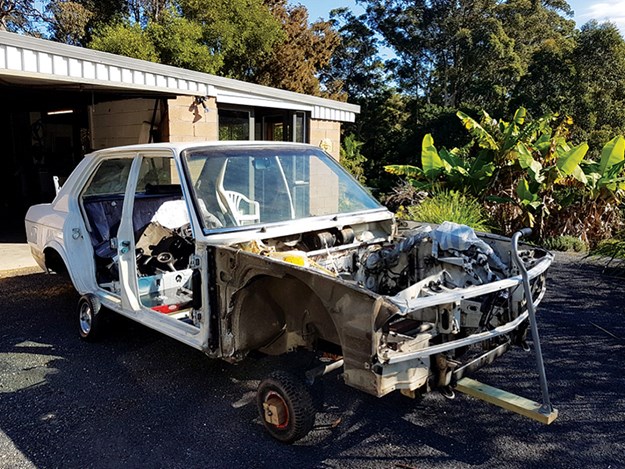
And so it begins
Fellow enthusiasts and myopic, left-handed bad back sufferers…I’m inspired to write once more in response to Jon Faine’s piece in the October issue of Unique Cars magazine. He pleaded the case for workshop manuals for myopic, left handed, bad back sufferers.
I hope this helps you feel a little better Jon, cause I can do better than that. Way betterer.
Glasses – tick. Left handed – yep, very dominant. Bad back - yep, that too. Plus a hip replacement this year. All tickety boo so far. Then some minor back surgery to relieve nerve pressure. But the real kicker is an ‘essential’ tremor that mostly affects, you guessed it, my left hand. And that really is annoying. Not sure why it is called an ‘essential’ tremor, cause I could sure do without it.
Try this. Upside down, under the dash trying to fit a small Phillips head screw through a tiny opening to hold a gauge cluster on and in. Then hold it all in place while fitting a screw driver up to the tiny head. With a very shaky left hand that just wont stay still. Stupid, stubborn or what?! Fitting a knurled retainer nut onto its thread – piece of cake.
Dashlight globes? Nothing to it.
I’ll give him this though. It sure does develop your vocabulary!

All progressing nicely here
And to prove it can, and is being done, albeit very slowly, following is and up to date pic of the BMW e28 535i I’m currently in a ‘relationship’ with.
This is where it was when I last sent you blokes a pic. Ready to tidy up the engine bay.
Well that’s all done. As well as the rebuild engine, transmission, diff, front and rear suspension all installed.
Plumbing, wiring (excluding interior) and ancillaries hooked up. Plus some tidy up of the duco. But only where absolutely necessary, cause the original duco is pretty good.
And here it is now.
Hopefully it will look pretty schmick as a driver, with a good detail and polish.
It is slow going. But hey I’m not in a rush. Can’t be really. See above. Plus we are on a pretty tight budget.
Michael Sandford
DON’T TAKE this the wrong way, but for the more senior mechanic, getting up and under dash is no fun. Here’s my tip: Remove the front seats. Then, before you get upside-down make sure you have every tool and component you need, all laid out in arm’s reach. This sort of work has been known to turn even the best of us into tourette syndrome impersonators. I reckon God gave us auto electricians for a very good reason, so I’m happy to turn a lot of that under-dash work over to them!
Light me up
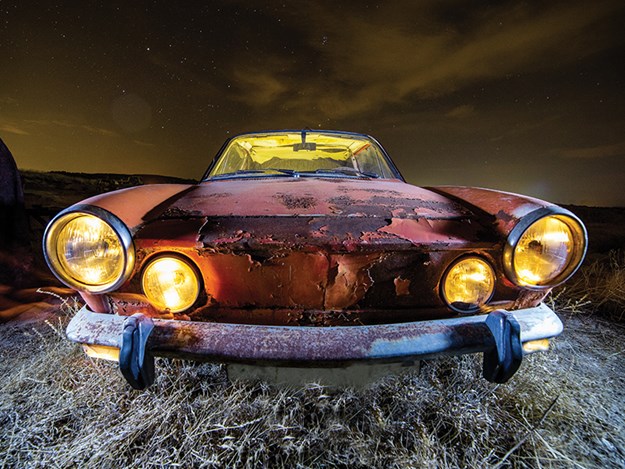
Lighting the way...just
I refer to the discussion of headlight and incandescent vehicle bulbs in several recent issues of Unique Cars magazine.
During many years working as a practising heavy vehicle electrical and HVAC technician, dealing almost exclusively with heavy haulage and road trains operating in Western Queensland and Northern Territory, I have found the majority of incandescent bulbs sold in retail blister packs as well as bulbs supplied and sold in many of the bulb cabinets favoured by workshops to be of junk quality.
In my experience, said bulbs will burn out, assume a black appearance and fail after a very short time in operation, often causing an internal short circuit inside the bulb which can have a detrimental effect on the vehicle electrical system. Expert industry representatives have advised the poor quality of the bond between the glass and metal components of the bulb will cause the inert gas contained within to leak out, thus causing the bulb to burn out and fail. Failure can happen more frequently on the passenger side of the vehicle, this side being exposed to the rougher road surface.
The poor quality of the filament, and the ability to withstand vibration, also has a major bearing with respect to bulb lifespan.
I would suggest to all involved with vehicles, avoid these blister packs and cabinet bulbs.
In my business I chose only to use premium bulbs manufactured in Europe, the first choice being product manufactured in Hungary, second choice product from Germany.
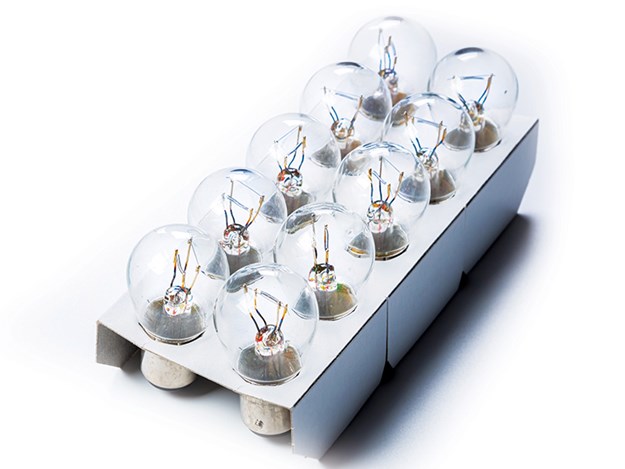
Buy quality not quantity
These quality bulbs are available from specialist suppliers, and at a premium price, some at double or triple the cost of the blister pack product, however over whole of life of the vehicle almost always work out to be more economical, and always more reliable and, with respect to headlights, a much safer option.
There are ADR-compliant LED headlight replacement bulb inserts available, including but not limited to standard H4, which are offered as direct halogen bulb replacements, and require no modification of headlight supply wiring or connectors. Said LED inserts can be purchased from specialist suppliers and should (hopefully) offer much improved night vision as well as a safer night driving experience.
In my considerable experience over many years, the use of high wattage headlight bulbs has proven to be a complete disaster, burnt out headlight bulb connectors, burnt fuse/breaker/relay blocks, damaged wiring looms, burnt out headlight and dimmer switches as well as heat damaged headlight reflectors and lenses being the normal result.
Vehicle fires have resulted from overheated wiring and components.
I would discourage the use of same in valuable classic vehicles.
It must be noted that the advent of LEDs have all but eliminated the dramas associated with incandescent bulbs, provided that only quality units are placed in service.
Make no mistake, there is no shortage of junk LEDs on the market. Some of the best quality LEDs are made in Australia, and I would encourage all to support Australian manufacturing whenever possible.
With respect to "bulb out warning systems" it must be noted these systems are calibrated to operate as designed only when loaded by the correct wattage bulbs.
Most signal (turn signal/brake light ect) "bulb out" systems, require 21 Watt bulbs installed to operate correctly. Many service stations and retail auto supply shops only sell 18 Watt bulbs, as well as 5 Watt park/tail/licence light bulbs, frequently of dubious quality. Owners with a system indicating a fault should check what’s installed.
I sincerely hope the readers of this fine family publication find these observations to be of interest.
Mac Carter
Townsville Truck Electrics you’ve reinforced a couple of my electrical hobbyhorses.
What you say about using high-power lamps in older cars is an interesting observation and worth keeping in mind. Sometimes I think we need to accept these old cars for what they are, along with their limitations.
Three-on-tree fix
The letter regarding the three-on-the-tree manual shift jamming from first to second on an HQ 202 took me back to my first car, a ’71 Belmont purchased second-hand in 1976. Once it clocked 60,000 miles it started to show wear, including the same problem as your correspondent.
I had moved from high school and a farm to the big smoke, and found a jammed shifter when trying to cross a double-lane road a new experience.
Fortunately the family mechanic had relocated from the country previously and I raised it with him. In typical fashion he had a look and a poke, identified a worn white plastic bush on the steering column as the culprit and then proceeded to cut an annulus from a plastic ice-cream container lid with scissors and then cut through in one place. So it was now like a thick letter C with the ends touching.
With a screwdriver he eased a gap on a side of the bush, and inserted the new circular shim – problem fixed!
The other issue which I never did solve was a propensity to stall on very cold mornings.
On my tight budget I fashioned a snorkel from the exhaust manifold to the air cleaner trumpet – no improvement. Next I made a high lift idle cam for the choke to keep the revs up – still it died.
The only solution was a patient warm-up, hard to do when you are eighteen!
A colleague at work had the same problem, he had heard the vapour was freezing in the carby – I wonder if you have heard of that?
Brian Zwar
I LOVE the simple fixes people sometimes come up with, and that home-made bush is a classic. As for the idling issue, those single-throat Strombergs were pretty reliable and my take is the idle gallery needed opening up, possibly with a jet drill.
The symptoms to me seem like running lean on the idle circuit when the engine was cold. Trying to run a fast idle would have taken it past the idle circuit, which wouldn’t have addressed the issue.
XJS buyer
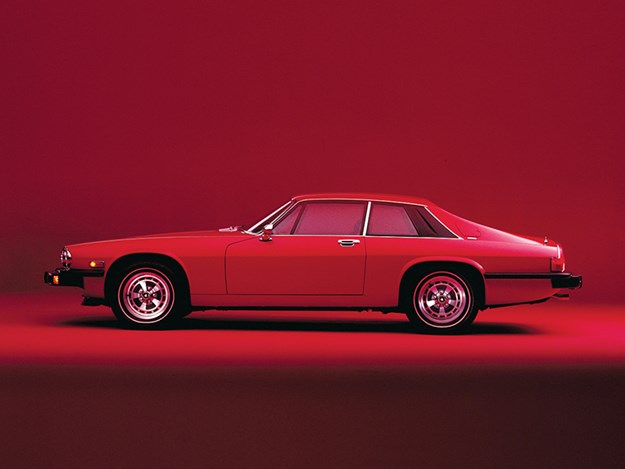
The XJS is a favourtie of Guido’s. He hasn’t succumbed to one.... yet.
A friend is putting what appears to be a pretty good Jaguar XJS HE on the market. It’s had decent maintenance, drives okay and has a tiny bit of rust.
It looks tidy under the bonnet. What else am I looking for?
James Kirk
I APPRECIATE a good Jag as much as the next person however to own one of those V12s, you need to be one of a few things: A mechanic, a keen owner with reasonably deep pockets, and/or patient. They are beautiful cars and are complex, so you need to be thorough in all your dealings with them, which includes checking out a potential buy..
For example, owners have long told us that these cars can be reasonably reliable, but a sensible precaution is to change old fuel lines for fresh ones to discourage them from catching fire.
That’s probably true for a lot of old cars. It’s a simple fact that complexity and age combined mean you have to be prepared to put the effort into these cars.
TRIVIAL PURSUIT
Duel turns 50

Did you know the iconic road flick Duel is now 50 yers old? Yep, it was released November 13, 1971. Starring Dennis Weaver as the jaded salesman in a Plymouth Valiant, the show (Steven Speilberg’s first feature) starred a brand of truck many of us had never heard of until the release of the movie – a Peterbilt.
Got a problem?
Want some advice on a build or a potential car purchase. Heck we’ll even tackle long distance diagnosis. Drop MIck a line at uniquecars@primecreative.com.au
From Unique Cars #460, December 2021
Unique Cars magazine Value Guides
Sell your car for free right here
Get your monthly fix of news, reviews and stories on the greatest cars and minds in the automotive world.
Subscribe

.jpg)












